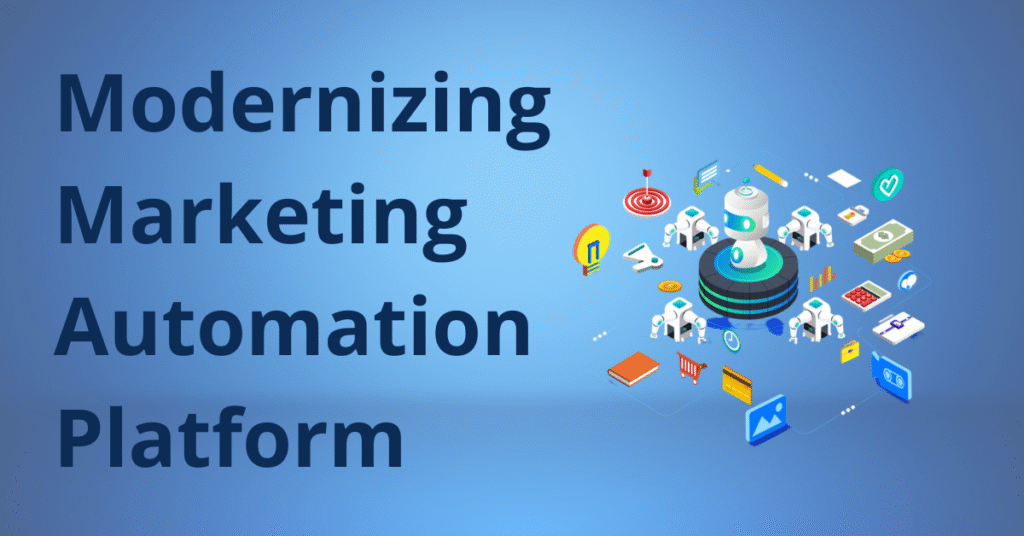
Key Takeaways
- Even clean data can fail when sender reputation declines.
- Mimecast and ISP throttling often signal infrastructure misalignment.
- Fixing loops, authentication, and suppression rules restores inbox reach.
- Regularly track bounce codes and sender score health metrics.
- Consistent monitoring prevents future email deliverability crises.
The marketing automation landscape is changing quickly as AI technologies reshape how teams engage and personalize at scale. Startups promoting AI-native Marketing Automation Platforms promise adaptive orchestration, faster insights, and less manual work. Yet for enterprise organizations, a replacement decision cannot rest on innovation headlines alone. Moving from one MAP to another—even between Eloqua and Marketo—requires strategic preparation, extensive testing, and governance alignment. The right modernization path depends less on what AI offers and more on whether the business is operationally ready to support it.
Why is there a race to replace old-school MAPs now?
Marketers want systems that learn continuously and act intelligently, which has sparked a surge of AI-driven MAP vendors. This race reflects aspiration, not inevitability.
A decade ago, legacy MAPs defined digital maturity by automating campaigns and syncing CRM data. As expectations evolved, marketing leaders sought more agility and predictive power. New companies such as Infection, Paminga, and Jon Miller’s stealth venture responded by embedding AI directly into their architectures. While these tools demonstrate innovation, many remain early in proving scalability and compliance maturity. For enterprise marketers handling regulated data and complex global programs, that gap can quickly outweigh the excitement around automation speed.
What promises do AI-native MAPs make that matter to MOPs leaders?
AI MAPs promise self-optimization—platforms that analyze behavior, predict outcomes, and adjust automatically. The appeal lies in faster experimentation and reduced administrative effort.
These new AI-powered marketing automation platforms use machine learning to interpret engagement patterns and improve targeting accuracy. For lean teams, this autonomy shortens cycles and reduces reliance on manual rules. However, the transition is rarely frictionless. Migrating data, retraining teams, and validating new integrations often demand significant investment. The efficiencies marketed as instant can take months to realize, especially for enterprises bound by privacy regulations and change-control requirements.
Where do enterprises feel real risk in a rip-and-replace move?
Large organizations face disruption risk because their marketing automation platform touches nearly every part of the revenue ecosystem. Replacing it without clear strategy can compromise data integrity, compliance, and performance stability.
Enterprise MAPs like Eloqua and Marketo are deeply connected to CRMs, analytics environments, and consent databases. Even a move between these two established systems can take months of coordination and testing. Adopting a newer AI-native MAP adds more unknowns—vendor maturity, uptime reliability, and security assurance. The cost of disruption may far exceed the perceived benefit of modernization. For most enterprise programs, incremental improvement remains the safer and more strategic route.
How can legacy MAPs be modernized without starting over?
Many organizations strengthen existing MAPs through augmentation rather than replacement. Adding targeted AI capabilities offers innovation without operational risk.
Teams can integrate ai in marketing automation functions such as predictive lead scoring, content recommendations, or send-time optimization. These extensions enhance current performance while retaining the governance, security, and reporting reliability of the existing platform. This strategy preserves institutional knowledge and minimizes revalidation work. It also ensures that modernization aligns with business priorities rather than following external hype.
When does a full switch make sense, and when does augmentation win?
A complete migration makes sense only when the current system fundamentally limits progress. For most enterprises, structured augmentation delivers faster, lower-risk outcomes.
Startups or younger brands can adopt AI powered MAPs more freely because they have lighter infrastructures and fewer integration dependencies. Established enterprises, by contrast, often gain more by layering intelligence onto stable foundations. Hybrid environments—where an AI-powered marketing automation platform supports innovation projects alongside a legacy MAP—allow teams to test new capabilities without jeopardizing compliance or data flow. This measured approach balances exploration with accountability.
What decision framework should guide the next 12 months?
Enterprises should begin with an honest assessment of pain points, governance maturity, and resource readiness. Technology changes succeed only when aligned with strategy.
If agility and advanced analytics are the main challenges, pilot AI MAPs in limited, low-risk scenarios. If compliance, auditability, or data trust drive priorities, extend the existing MAP with certified AI enhancements. Leadership should ensure every change aligns with data policy, staffing capability, and long-term revenue operations. Technology must follow process, not the other way around. Modernization driven by strategy prevents the organization from being swayed by marketing trends alone.
Conclusion
AI-driven innovation is reshaping how marketing automation operates, but replacement should never be a reflex. The most successful enterprises modernize methodically, ensuring governance, data quality, and strategic alignment come first. Flashy AI features may promise immediate transformation but often conceal significant migration costs and hidden dependencies. The right decision is the one grounded in readiness and resilience. 4Thought Marketing partners with organizations to evaluate modernization objectively, helping them evolve their marketing automation platform responsibly and sustainably.
Frequently Asked Questions (FAQs)
What trends are reshaping marketing automation today?
AI integration, real-time personalization, and compliance automation are driving new platform designs.
How do AI MAPs differ from traditional MAPs?
They use predictive algorithms to automate optimization instead of rule-based triggers.
Are legacy MAPs becoming obsolete?
No. They remain crucial for enterprise operations that prioritize compliance, stability, and audit-ready data.
Can AI features be added to older MAPs?
Yes. AI-powered marketing automation platforms and plug-ins can enhance legacy systems without full migration.
How should an organization decide between upgrading or switching?
Assess goals, resources, and governance posture. Move only when technology, people, and strategy align.





